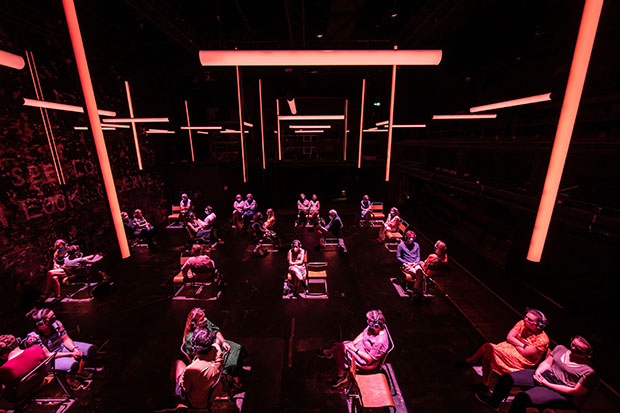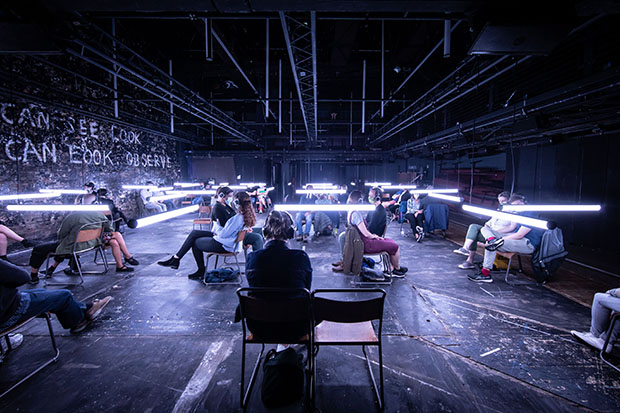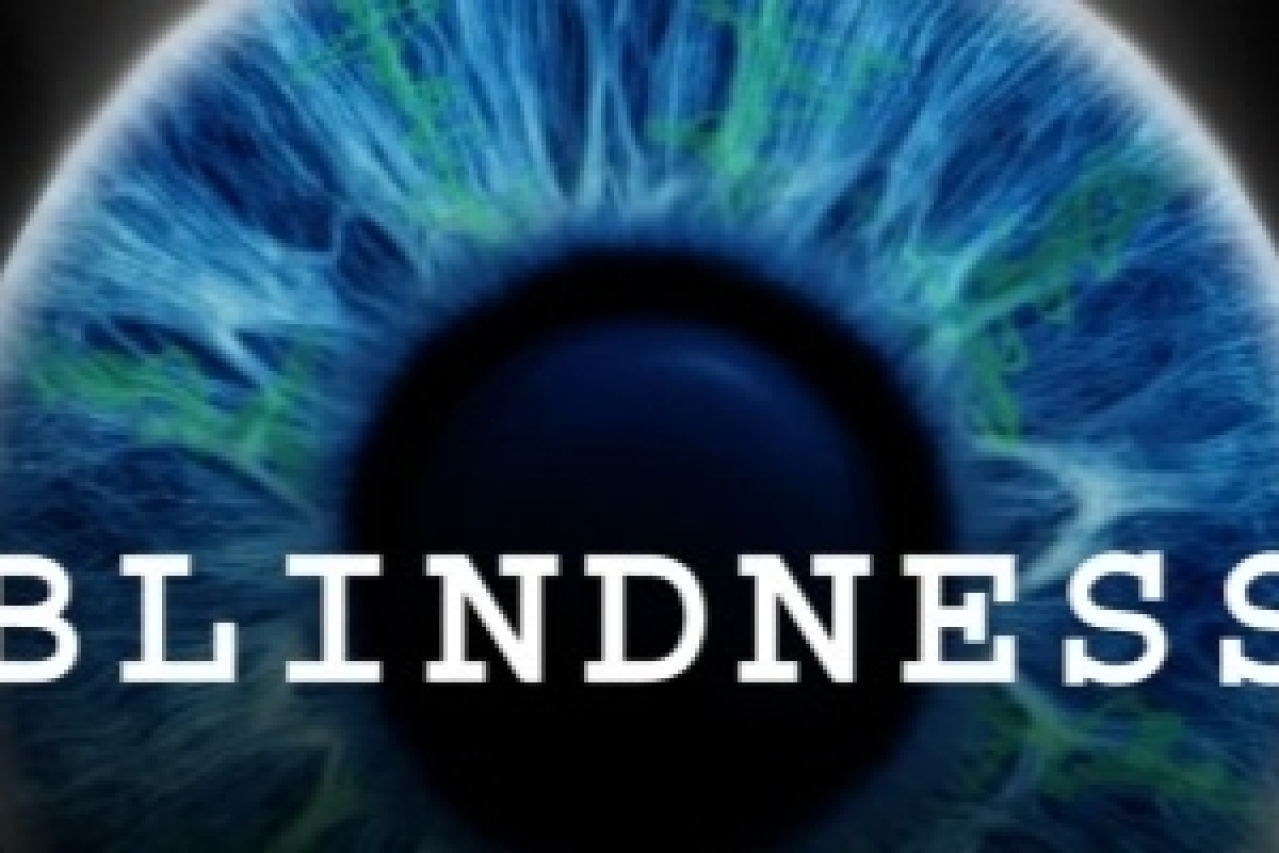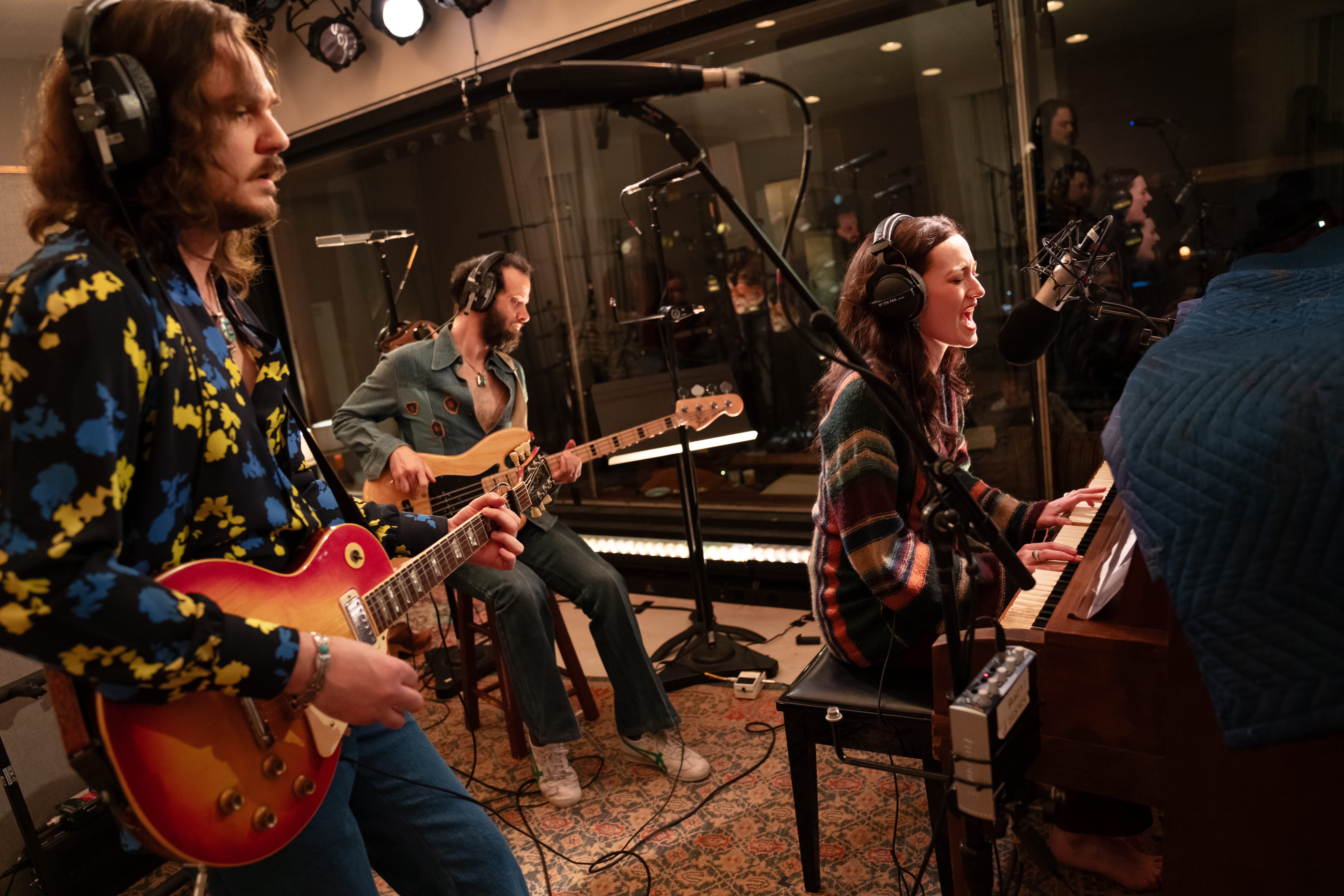Review: Blindness Welcomes Off-Broadway Audiences Back Inside
Blindness isn't like most off-Broadway shows you might have seen in the before times. Reminders of Covid-19 remain throughout this unique audio and lighting installation, originally produced at London's Donmar Warehouse and now appearing at the Daryl Roth Theatre: Viewers are seated in two-person pods well away from strangers; there are no physical programs or tickets, no live actors, and no bathrooms (best to find a preshow alternative); as with any indoor activity, masks are a must. Still, it feels like a miracle to be attending theater at all these days, and if these are the conditions under which it can happen, I'm all for it. In many ways, Blindness is the ideal play to guide us out of the darkness of the past year.
The story is an adaptation of Nobel Prize winner José Saramago's novel about an epidemic of a mysterious sickness that blinds its victims to all but a white blur. In an effort to control the spread, the government confines the first patients to an abandoned mental hospital and tells them that the punishment for leaving is "instant death." The first set of detainees include an eye doctor and his wife, who is feigning blindness so that she can follow her husband into this brutal quarantine. As the only seeing inmate, she assumes an outsize role in safeguarding the welfare of the others, especially as order begins to break down both within and outside the asylum's walls.

(© Helen Maybanks)
Lasting just 70 minutes, this adaptation by Simon Stephens (The Curious Incident of the Dog in the Night-Time) is divided into three acts in which our relationship with the Doctor's Wife becomes increasingly intimate. While the first act feels like an audiobook you might listen to before bed, the subsequent acts are likely to have some audience members bracing for impact or quietly sobbing into their masks. Juliet Stevenson, who voices the bulk of the text as both the narrator and the Doctor's Wife, conveys the dramatic urgency of a live performance while offering a fresh take on her character.
As depicted in Saramago's novel, the Doctor's Wife is practically a saint. She maintains a very Portuguese kind of civility, even when she's shanking someone in a filthy hospital ward. It's not quite believable. Happily, Blindness departs from its source material, resulting in Stevenson's mercurial, occasionally shrieking, but undoubtedly human performance. So much of the story is told through the breathy panic in her voice or the faint whisper of information she doesn't want any of the others to hear. Terrible offstage events that we can neither see nor hear suggest themselves in her growl. It is a tour de force of voice acting.
The precision strike design choices made under the direction of Walter Meierjohann serve as a force multiplier for Stevenson's performance. Although her voice is prerecorded, Ben and Max Ringham's extraordinary binaural sound design tricks our brains into thinking that she is right in front of us (each audience member dons an individual headset). Stevenson seems to move about the room, whisper in our ear, and breathe all over us in a way that feels inappropriate in the age of COVID. Even in the cavernous Daryl Roth Theatre, the total blackout combined with the sound design makes it feels like being at a one-woman show in a broom closet (ah, those were the days).

(© Helen Maybanks)
One might assume that any light in this situation would come as a relief, but Jessica Hung Han Yun's electric zaps of illumination are shocking, violently cleaving the mini-scenes of the second act and leaving us with lingering white blurs in our eyes. It's a powerful way to visualize the "white sickness" of the story, but audience members with sensitive eyes should know what they're getting into.
Not all of Yun's lighting effects are so aggressive. She collaborates with scenic designer Lizzie Clachan to create several absolutely gorgeous and arresting moments, which I won't spoil here. I will reveal that the most effective of Clachan's choices is the simplest one, which is to separate the audience into isolated pairs, underlining the two-person society of the Doctor and his Wife. After a year in which so many of us have been isolated with just one other person (if we're lucky), this is something New York audiences can undoubtedly appreciate.
Viewers of Blindness might also have feelings about the story of a pandemic that catches everyone unprepared, which the government initially downplays before taking extreme measures only once it is too late. Perhaps they will have thoughts about the cruelty such circumstances can provoke in people, and the courage they provoke in others. And then there are the play's breathtaking closing moments, which hold out the possibility of a renewal we all need right now. Like I said, there couldn't be a better show to beckon us back to the theater.











